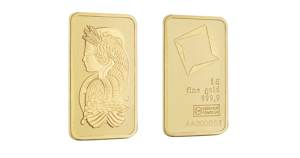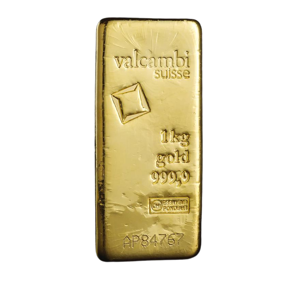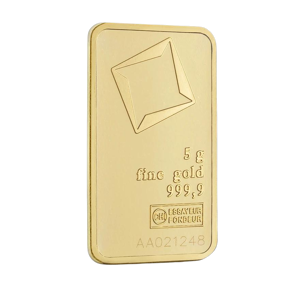Tavex uses cookies to ensure website functionality and improve your user experience. Collecting data from cookies helps us provide the best experience for you, keeps your account secure and allows us to personalise advert content. You can find out more in our cookie policy.
Please select what cookies you allow us to use
Cookies are small files of letters and digits downloaded and saved on your computer or another device (for instance, a mobile phone, a tablet) and saved in your browser while you visit a website. They can be used to track the pages you visit on the website, save the information you enter or remember your preferences such as language settings as long as you’re browsing the website.
| Cookie name | Cookie description | Cookie duration |
|---|---|---|
| tavex_cookie_consent | Stores cookie consent options selected | 60 weeks |
| tavex_customer | Tavex customer ID | 30 days |
| wp-wpml_current_language | Stores selected language | 1 day |
| AWSALB | AWS ALB sticky session cookie | 6 days |
| AWSALBCORS | AWS ALB sticky session cookie | 6 days |
| NO_CACHE | Used to disable page caching | 1 day |
| PHPSESSID | Identifier for PHP session | Session |
| latest_news | Helps to keep notifications relevant by storing the latest news shown | 29 days |
| latest_news_flash | Helps to keep notifications relevant by storing the latest news shown | 29 days |
| tavex_recently_viewed_products | List of recently viewed products | 1 day |
| tavex_compare_amount | Number of items in product comparison view | 1 day |
| Cookie name | Cookie description | Cookie duration |
|---|---|---|
| chart-widget-tab-*-*-* | Remembers last chart options (i.e currency, time period, etc) | 29 days |
| archive_layout | Stores selected product layout on category pages | 1 day |
| Cookie name | Cookie description | Cookie duration |
|---|---|---|
| cartstack.com-* | Used for tracking abandoned shopping carts | 1 year |
| _omappvp | Used by OptinMonster for determining new vs. returning visitors. Expires in 11 years | 11 years |
| _omappvs | Used by OptinMonster for determining when a new visitor becomes a returning visitor | Session |
| om* | Used by OptinMonster to track interactions with campaigns | Persistent |
| Cookie name | Cookie description | Cookie duration |
|---|---|---|
| _ga | Used to distinguish users | 2 years |
| _gid | Used to distinguish users | 24 hours |
| _ga_* | Used to persist session state | 2 years |
| _gac_* | Contains campaign related information | 90 days |
| _gat_gtag_* | Used to throttle request rate | 1 minute |
| _fbc | Facebook advertisement cookie | 2 years |
| _fbp | Facebook cookie for distinguishing unique users | 2 years |
Minted vs Cast Gold Bars: Understanding the Differences

Gold has long been a symbol of wealth and stability, making gold bars a prized asset for investors. In this article we explore the key characteristics and investment merits of these two popular forms of gold bullion.
Whether you’re new to precious metals or an experienced investor, understanding the differences between minted and cast gold bars is essential. This article covers their production processes, aesthetic distinctions, and investment potentials, helping you decide the best type for your needs.
What are Gold Bars?

Gold bars are solid units of gold that come in various sizes and weights. They serve as an investment vehicle, offering a physical means to own and store wealth. Typically, they are rectangular in shape, with standardised dimensions that facilitate storage, stacking, and transport. Gold bars can range in size from 1g, to 1 troy ounce, to 1kg and beyond.
Importance of Gold Investment
Investing in gold is favoured for its perennial value and defensive asset qualities.
Gold tends to maintain its worth over time, protecting against inflation and currency devaluations.
Investment gold bars typically contain 24 karat of pure gold content. For centuries, gold has been a refuge for investors during times of financial instability, serving as a counterbalance to stock market fluctuations and providing asset diversification.
Types of Gold Bars
Cast Gold Bars

Cast gold bars are made by pouring melted gold into pre-shaped moulds, allowing it to cool and solidify. This traditional method of production often results in bars with a slightly rough and matte surface, sometimes with unique markings left by air bubbles or slight imperfections in the mould. These features give each cast bar a unique character and tactile feel.
Minted Gold Bars

Minted gold bullion bars are manufactured using a more technologically advanced process. Gold blanks, cut from long gold strips, are fed into a press where dies imprint designs and inscriptions onto the surface. The high precision and fine detailing capable in the minting process result in a highly polished and aesthetically pleasing product.
Key Differences Between Minted and Cast Gold Bars
1) Appearance and Design
Minted gold bars are distinguished by their uniform appearance and often ornate designs. They can feature intricate patterns, precise inscriptions, and sometimes even colour elements.
Cast bars are more rugged and less uniform, their simplicity appealing to those who prefer a more ‘raw’ aspect of gold
2) Purity and Composition
While both types of gold bars are typically offered in high purities, minted bars may come with advanced security features such as holograms, serial numbers, and assay certificates, which enhance their trustworthiness and appeal to certain investors.
3) Cost Considerations

Because the minting process is more detailed and labor-intensive, minted gold bars usually carry a higher premium above the spot price of gold than cast bars. Investors looking for the most cost-effective way to acquire physical gold often opt for cast bars from bullion dealers.
4) Market Preferences
Preferences vary among investors: some prioritise the lower cost and straightforward value of cast bars, while others prefer the refined appearance and enhanced security features of minted bars. It is important to note that when buying and selling gold bullion, dealers will offer prices based on the amount of gold in your product. Gold dealers will base the price off the relative intrinsic value (usually around -2% below SPOT, although this varies from dealer to dealer).
How to Choose the Right Type of Gold Bar

When choosing a gold bar, it’s important to assess the premium, liquidity (ease of selling in the future), and the reputation of the mint. These factors will affect both the short-term affordability and long-term value of the investment.
Investment Goals
Your objectives are crucial in selecting the type of gold bar. For wealth preservation, larger cast bars might be ideal. If you’re interested in collectibility or potential resale to collectors, minted bars might serve better.
Storage and Security
Consider the practical aspects of owning physical gold, such as storage. While smaller bars can be easily stored in a home safe, larger bars might require secure vault storage.
Advantages of Each Type

Cast Bars
The primary advantage of cast gold bars is their lower cost per ounce, which allows investors to acquire more gold for their money. The simplicity and minimalistic design also appeal to those who prefer the raw beauty of gold.
Minted Gold Bars
Minted bars are highly prized for their artistry and craftsmanship
They often feature advanced security measures that make them less prone to counterfeiting, providing additional peace of mind to investors.
Conclusion
The choice between minted and cast gold bars depends on a variety of factors, including personal preferences, investment goals, and practical considerations such as storage and security.
Minted gold bars, with their precise craftsmanship and enhanced security features, cater to those who value aesthetics and added safety in their investments. On the other hand, cast gold bars offer a more straightforward and cost-effective solution, appealing to investors focused on the intrinsic value of gold and who appreciate the unique, tactile nature of these bars.
Both types maintain high purity levels and serve as reliable stores of wealth, making them excellent options for diversifying investment portfolios and securing financial stability in uncertain times.
Ultimately, please note whether opting for the refined polish of minted bars or the rugged charm of cast bars, investors are advised to carefully consider their specific investment objectives and the various characteristics of each type of gold bar to make the most informed decision.



















